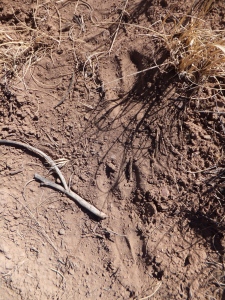Wildlife “Track and Sign Identification” course with Casey McFarland
We organized another wildlife track and sign identification course with renown wildlife specialist Casey McFarland on April 9th and 10th. He will be in the area this summer and would like to do more courses, so get on our wait list and I’ll keep you posted.
Here is some feedback from a couple of the latest participants:
From Michael Cox ~ The weekend was terrific! Casey taught me a new way of looking at the natural world. It was like suddenly realizing that you’ve been living in the dark and having the light turned on. It was intimidating and challenging but I’d do it again next weekend if I could, and I hope that Casey does another session sometime soon.
I am interested in your project, but I should tel you that I only received a 68 in the course, and reached some astoundingly stupid conclusions, so I’m not sure how much help I could be. So please alert me when you go out next time.
PS- Thanks for the heads up on the course, I wouldn’t have missed it for the world.
and from Sarah and Matt Fontaine ~Hi Peter,
Matt and I both thoroughly enjoyed the weekend, and got so much out of it! I have been looking at tracks, and books of tracks, for a while… it was so satisfying to have someone with extensive knowledge to give hard facts to what had previously been questionable deduction. And Casey showed us animal sign that I would have walked right past, not knowing what to look for. We also appreciate the style of teaching: having us try to figure out what a track/sign is using whatever knowledge and common sense we have, before just telling us. That really gets one looking around, analyzing the surroundings, asking questions like ‘who would live here?’ or ‘what size animal would make that scat?’
We are interested in volunteering for the Pathways monitoring program, do keep us posted!












